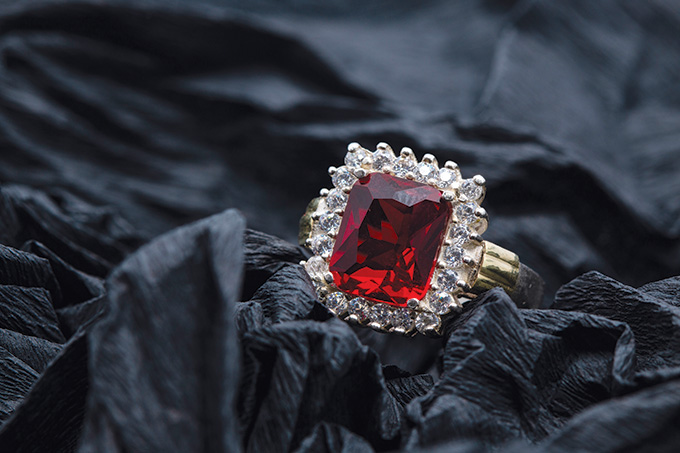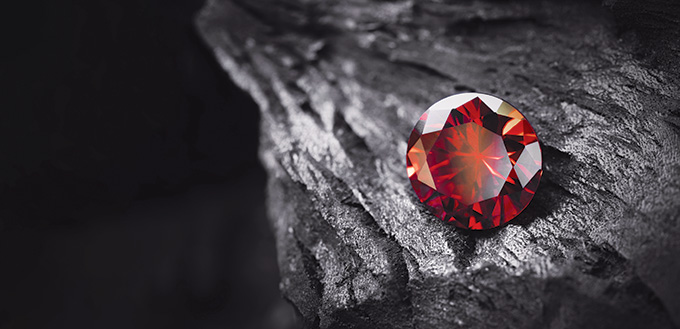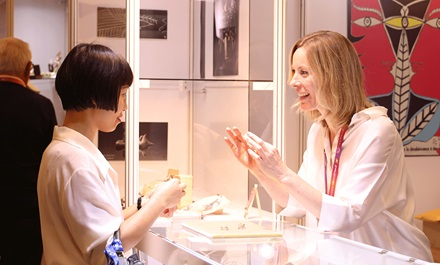The ruby market in China is poised for growth, driven by cultural affinity for the beloved red gem, untapped consumer segments and enhanced education and consumer awareness.
This article first appeared in the JNA July/August 2024 issue.
Asia is a key market for rubies, with China as a consistently strong performer. According to some dealers interviewed by JNA, Burmese rubies were highly coveted in China, but there were not enough gems in the market to meet soaring demand. The discovery of Mozambique ruby deposits in Africa in 2008 eased supply challenges, further fuelling the growth of China's ruby trade.
As China's upper-class segment continues to grow and consumer preferences evolve, rubies have risen to become a highly desired coloured gemstone among discerning buyers in recent years.
Beloved red
The cultural significance of rubies has made them extremely appealing to Chinese consumers. In Chinese culture, the colour red symbolises luck, celebration and prosperity. Ruby’s vivid and mesmerising tones naturally align with these cultural notions.
China is the main market of Thailand-based gemstone manufacturer and wholesaler World Corundum Co Ltd. General Manager Tarnan Pattaratara explained, “The Chinese market is unique as people prefer very rare gems of fine quality. Unheated stones are always in high demand.”
Majority of Chinese buyers mainly seek bright reds while pinkish-red or medium-colour variants are less popular, added Pattaratara.
Kiefer Tang, CEO of PN Gems (HK) Co Ltd, agreed, adding that Chinese buyers prioritise colour over other factors such as cut, clarity, brilliance and size when purchasing coloured gemstones. “They are quite meticulous when it comes to colour,” he said.
This indicates sparkling potential for rubies in the Chinese market, added Pattaratara. “Buyers will have more options for purchase once they have a better understanding of the wide colour spectrum and varieties of ruby in the market, ranging from deep red to light pink,” he noted.
Ruby education
According to a consumer trends report published in January this year by coloured gemstone miner Gemfields, the Chinese market demonstrated a high level of interest in rubies but there is a knowledge gap, with demand for transparent information on prices, certification, origin and processing from reputable sources on the rise.
The report, “Ruby: Breaking Out of Collectors’ Cabinets, Becoming Part of China’s Middle Class Lifestyle,” was conducted between September and October 2023. Data was collected via a combination of online surveys and in-person interviews of 1,000 respondents aged 25 to 60 across Tier 1 and Tier 2 cities in mainland China.
Gemfields said heightened professional education on rubies could further drive consumption.
“Of course, there are a few sophisticated buyers who have a certain level of knowledge about gemstones. For instance, they know that different laboratories have different criteria for certifications. They have specific requirements about which laboratory issues the certificates,” Tang of PN Gems said.
He continued, “However, given the vast size of the China market, majority of consumers are at a beginner level in terms of gemstone know-how. There is a need to strengthen their knowledge and recognition of rubies and develop a more rational view of flaws in natural gemstones.”
He further noted that China's growing middle- and upper-class segments are increasingly becoming interested in learning more about the gems that they purchase, specifically origin, colour, clarity and treatment processes. They are eager to acquire information through various online and offline channels and are even willing to pay for courses.
“The jewellery market in China is thriving and the jewellery education sector is booming as well. Various laboratories and organisations have introduced jewellery training courses in China for gem and jewellery enthusiasts and industry professionals alike. Such trainings can shape and nurture potential high-quality consumers,” Tang said.
Rosy outlook
China’s ruby market has enormous growth potential, owing to untapped segments, noted Tang.
“In the past, rubies were only favoured in first-tier cities, and this demand was confined to fine-quality gems. Over the years, customers in other cities have become interested in medium- to low-quality stones for daily use. These buyers are more price-oriented and are not so critical about quality,” he explained.
Pattaratara of World Corundum also saw increasing demand for smaller-sized rubies as well as high-quality calibrated rubies from jewellery manufacturers who want to produce sizeable jewellery collections.
The market, however, faces significant supply challenges due to lower production of premium-quality gems, which also leads to higher ruby prices.
According to ruby suppliers, prices will continue to rise or remain at a high level.
Andy Chan, chairman of Hong Kong Hopewell International Supply Chain Co Ltd, commented, “The ruby market in China was relatively slower last year, mainly due to global economic uncertainties, which adversely affected the retail business. Jewellery retailers were unable to accept high ruby prices and were reluctant to replenish products in their inventories.”
As a Gemfields’ authorised auction partner, Hopewell International supplies rubies to chain jewellers in mainland China and Hong Kong.
Chan added, “I remain optimistic about prospects in China’s ruby market as demand for rubies remains strong. An industry-wide effort to enhance marketing and educational initiatives, however, is necessary.”
PN Gems’ Tang, meanwhile, said the high prices of fine-quality rubies foster confidence among consumers and encourage them to invest in rubies.












